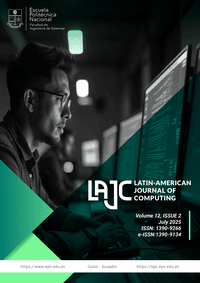Hybrid CNN-Transformer Model for Severity Classification of Multi-organ Damage in Long COVID Patients
Palabras clave:
COVID-19, Chest X-rays, CNN, Vision Transformer, Severity Classification, Deep Learning.Resumen
Global COVID-19 spread has necessitated the use of rapid and accurate diagnostic procedures to support clinical decision-making, particularly in resource-limited environments. In this work, a hybrid deep model combining Convolutional Neural Networks (CNN) and Transformer architecture is proposed to diagnose COVIDx CXR-3 dataset chest X-ray images into three classes of severity levels: Mild, Moderate, and Severe. The
methodology incorporates data preprocessing techniques such as resizing, normalization, augmentation, and SimpleITK organ segmentation. A DenseNet121-based CNN extracts local features, while global dependencies are extracted by a Vision Transformer. The features from both are fused and fed to a classification head to
generate the predictions. The training was done in PyTorch with learning rate 0.0001, batch size 32 and optimized with Adam optimizer for 50 epochs. Performance measures like Accuracy, Precision, Recall, F1-Score, and Confusion Matrix were computed to measure performance. Results show that the CNN-transformer model which outperforms the CNN-only model that achieved 88%.
This integration has demonstrated a better capability in severity classification and great potential in helping clinicians prioritize care, optimize treatment plans, and allocate resources, thereby improving outcomes in COVID-19 management.
Descargas
Descargas
Publicado
Número
Sección
Licencia
Aviso de derechos de autor/a
Los autores/as que publiquen en esta revista aceptan las siguientes condiciones:
- Los autores conservan los derechos de autor y ceden a la revista el derecho de la primera publicación, con el trabajo registrado con la Creative Commons Attribution-Non-Commercial-Share-Alike 4.0 International, que permite a terceros utilizar lo publicado siempre que mencionen la autoría del trabajo y a la primera publicación en esta revista.
- Los autores pueden realizar otros acuerdos contractuales independientes y adicionales para la distribución no exclusiva de la versión del artículo publicado en esta revista (p. ej., incluirlo en un repositorio institucional o publicarlo en un libro) siempre que indiquen claramente que el trabajo se publicó por primera vez en esta revista.
- Se permite y recomienda a los autores a compartir su trabajo en línea (por ejemplo: en repositorios institucionales o páginas web personales) antes y durante el proceso de envío del manuscrito, ya que puede conducir a intercambios productivos, a una mayor y más rápida citación del trabajo publicado.
Descargo de Responsabilidad
LAJC en ningún caso será responsable de cualquier reclamo directo, indirecto, incidental, punitivo o consecuente de infracción de derechos de autor relacionado con artículos que han sido presentados para evaluación o publicados en cualquier número de esta revista. Más Información en nuestro Aviso de Descargo de Responsabilidad.










